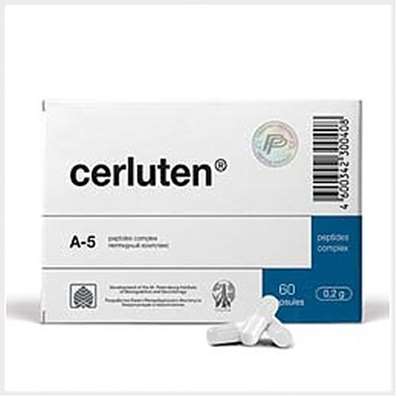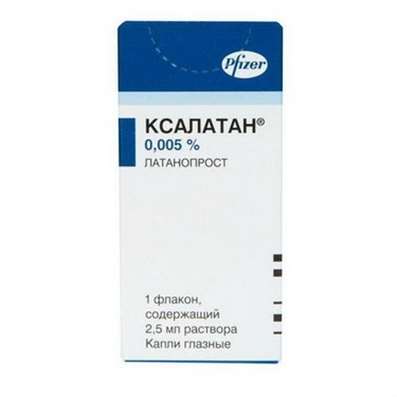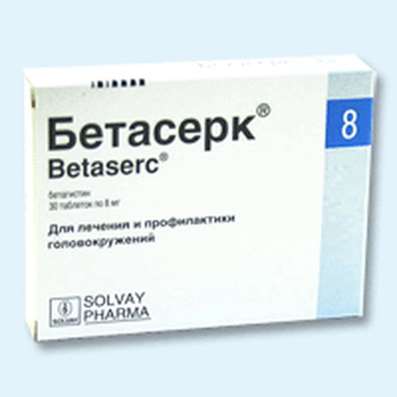Instruction for use: Actasulid
I want this, give me price
Active substance Nimesulide
ATX code M01AX17 Nimesulide
Pharmacological groups
Other non-narcotic analgesics, including non-steroidal and other anti-inflammatory drugs
Nosological classification (ICD-10)
K08.8.0 * Painful toothache
Dentinal pain, Dentinal pains, Pain pulpitis, Anesthesia in dentistry, Pain syndromes in dental practice, Pain after removal of tartar, Pain when extracting a tooth, Toothache, Pain after dental interventions
M06.9 Other specified rheumatoid arthritis
Rheumatoid arthritis,Pain syndrome in rheumatic diseases, Pain in rheumatoid arthritis, Inflammation in rheumatoid arthritis, Degenerative forms of rheumatoid arthritis, Children's rheumatoid arthritis, Exacerbation of rheumatoid arthritis, Acute articular rheumatism, Rheumatic arthritis, Rheumatic polyarthritis, Rheumatoid arthritis, Rheumatic polyarthritis, Rheumatoid arthritis, Rheumatoid arthritis of active course, Rheumatoid arthritis, Rheumatoid polyarthritis, Acute rheumatoid arthritis, Acute rheumatism
M13.9 Arthritis, unspecified
Arthritis,Purulent arthritis (non-infectious), acute Arthritis,Pain in acute inflammatory diseases of the musculoskeletal system,Pain in chronic inflammatory diseases of the musculoskeletal system,The pain in osteoarthritis, Inflammation in osteoarthritis, Inflammatory arthropathy, Inflammatory and degenerative joint diseases, Inflammatory disease of the musculoskeletal system, Inflammatory joint disease, Inflammatory diseases of the musculoskeletal system, destructive arthritis, The disease of the musculoskeletal system, Diseases of the musculoskeletal system, Diseases of the musculoskeletal system and connective tissue, Infections musculoskeletal system, monoartrit, Non-infectious arthritis, rheumatic arthritis, Osteoarthritis, Acute inflammation of the musculoskeletal tissue, Acute inflammatory diseases of the musculoskeletal system, Acute inflammatory condition of the musculoskeletal system, Acute arthritis, Acute osteoarthritis, Post-traumatic osteoarthritis, Reactive arthritis, Chronic inflammatory diseases of the joints, Chronic arthritis, Chronic inflammatory arthritis, Chronic inflammation of the inner layer of the joint capsule, Chronic inflammation of the joint capsule,Chronic inflammatory disease of the joints, Exudative arthritis
M15-M19 Osteoarthritis
M25.5 Pain in the joint
Arthralgia, Pain syndrome in musculo-articular diseases, Pain syndrome in osteoarthritis, Pain syndrome in osteoarthritis, Pain syndrome in acute inflammatory diseases of the musculoskeletal system, Pain syndrome in chronic inflammatory diseases of the musculoskeletal system, Pain in the joints, Soreness of the joints, Soreness of joints in severe physical exertion, Painful inflammatory joint damage, Painful conditions of the musculoskeletal system, Painful joint conditions, Painful traumatic affection of joints, Pain in the musculoskeletal system, Pain in Shoulder Joints, Pain in the joints, Joint pain, Joint pain with injuries, Musculoskeletal pain, Pain with osteoarthritis, Pain in the pathology of the joints, Pain in rheumatoid arthritis, Pain in chronic degenerative bone diseases, Pain in chronic degenerative joint diseases, Bone-joint pain, Joint pain, Arthritic pain of rheumatic origin, Articular pain syndrome, Joint pain, Rheumatic pain, Rheumatic pains
M71 Other bursopathies
Bursitis, Bursopathy, Diseases of soft tissues, Osteoarthritis in musculo-articular diseases, Inflammatory disease of soft tissues, Subacute bursitis
M77.9 Other unspecified
Capsule, Periarthritis, Tendonitis, Tendopathy, Periarthropathy
M79.1 Myalgia
Myofascial pain syndromes ,Pain syndrome in musculo-articular diseases, Pain syndrome in chronic inflammatory diseases of the musculoskeletal system, Pain in the muscles, Tenderness of muscles, Muscular soreness in severe physical exertion, Painful conditions of the musculoskeletal system, Pain in the musculoskeletal system, Pain in the muscles, Pain at rest, Muscle aches, Muscle pain, Musculoskeletal pain, Myalgia, Muscle pain, Muscle pain at rest, Muscle pain, Muscular pain of non-rheumatic origin, Muscle pain of rheumatic origin, Acute muscle pain, Rheumatic pain, Rheumatic pains, Myofascial syndrome, Fibromyalgia
N94.6 Dysmenorrhea Unspecified
Pain during menstruation, Functional disorders of the menstrual cycle, Menstrual cramps, Emmeniopathy, Pain during menstruation, Painful menstrual irregularities, algomenorrhea, algomenoreya, Pain smooth muscle spasm, Pain spasm of smooth muscles (renal and biliary colic, intestinal spasms, dysmenorrhea), Pain spasm of smooth muscles of internal organs (kidney and biliary colic, intestinal spasms, dysmenorrhea), Disalgomenoreya, dysmenorrhea, Dysmenorrhea (essential) (Exfoliative), menstrual disorder, menstruation painful, metrorrhagia, Violation of the menstrual cycle, Menstrual irregularities, Prolaktinzavisimoe menstrual disorders, Prolaktinzavisimoe menstrual dysfunction, Pain spasm of smooth muscles of internal organs, Spasmodic dysmenorrhea, Primary disalgomenoreya
R51 Headache
Pain in the head, Cephalgia, Pain with sinusitis, Pain in the back of the head, Painful headache, Headache of vasomotor genesis, Headache of vasomotor origin, Headache with vasomotor disorders, Headache, Neurological headache, Serial headache
T14 Injury of unspecified site
Pain syndrome with injuries and after surgical interventions, Injuries, Extensive trauma to the skin and soft tissues, Muscle and ligament injuries, Injuries, Fibroma traumatic, Acute sport injuries
Z100 * CLASS XXII Surgical practice
Abdominal surgery, adenomectomy, Amputation, Coronary angioplasty, Angioplasty of the carotid arteries, Antiseptic skin treatment for wounds, Antiseptic Hand, Appendectomy, atherectomy, Balloon coronary angioplasty, Vaginal hysterectomy, The coronary bypass, Interventions in the vagina and cervix, Interventions on the bladder, Intervention in the mouth, Restoration and reconstructive surgery, Hand hygiene of medical personnel, Gynecologic surgery, Gynecological intervention, Gynecological surgery, Hypovolemic shock during operations, Disinfection of purulent wounds, Disinfection of wounds edges, Diagnostic intervention, Diagnostic procedures, Cervical Diathermocoagulation, Long-surgery, Replacing the fistula catheters, Infection in orthopedic surgery, Artificial heart valve, cystectomy, Short-term outpatient surgery, Short-term operation, Short surgical procedures, Krikotireotomiya, Blood loss during surgery, Bleeding during surgery and in the postoperative period, Kuldotsentez, laser photocoagulation, laser coagulation, retinal laser coagulation, Laparoscopy, Laparoscopy in Gynecology, CSF fistula, Small gynecological operations, Small surgical procedures, Mastectomy and subsequent plastic, mediastinotomy, Microsurgical operations on the ear, Mukogingivalnye operation, suturing, Minor surgery, neurosurgical operation, Immobilization of the eyeball in ophthalmic surgery, testectomy, pancreatectomy, Perikardektomiya, The period of rehabilitation after surgery, The period of, convalescence after surgery, Percutaneous transluminal coronary angioplasty, Pleural thoracentesis, Pneumonia postoperative and posttraumatic, Preparation for surgical procedures, Preparation for surgery, Preparation of the surgeon's hands before surgery, Preparation of the colon for surgical procedures, Postoperative aspiration pneumonia in neurosurgical and thoracic surgery, Postoperative nausea, Postoperative bleeding, postoperative granuloma, postoperative shock, The early postoperative period, myocardial revascularization, Radiectomy, gastric Resection, bowel resection, uterine Resection, liver Resection, enterectomy, Resection of part of the stomach, Reocclusion of the operated vessel, Bonding tissues during surgical procedures, Removal of sutures, Condition after eye surgery, Condition after surgery, Condition after surgery in the nasal cavity, Condition after gastrectomy, Status after resection of the small intestine, Condition after tonsillectomy, Condition after removal of the duodenum, Condition after phlebectomy, Vascular surgery, Splenectomy, Sterilization of surgical instruments, Sterilization of surgical instruments, sternotomy, Dental surgery, Dental intervention in periodontal tissues, strumectomy, Tonsillectomy, Thoracic surgery, total gastrectomy, Transdermal intravascular coronary angioplasty, Transurethral resection, Turbinektomiya, Removal of a tooth, cataract surgery, Removal of cysts, tonsillectomy, Removal of fibroids, Removing the mobile primary teeth, Removing polyps, Removing broken tooth, Removal of the uterus body, Removal of sutures, Urethrotomy, Fistula likvoroprovodyaschih ways, Frontoetmoidogaymorotomiya, Surgical infection, Surgical treatment of chronic limb ulcersm, Surgery, The surgery in the anal area, The surgery on the colon, Surgical practice, The surgical procedure, Surgical interventions, Surgery on the gastrointestinal tract, Surgical procedures on the urinary tract, Surgical procedures on the urinary system, Surgical intervention of the genitourinary system, Surgical procedures on the heart, Surgical manipulation, surgery, Surgery on the veins, Surgical intervention, Vascular surgery, Surgical treatment of thrombosis, cholecystectomy, Partial gastric resection, transabdominal hysterectomy, Percutaneous transluminal coronary angioplasty, Percutaneous transluminal angioplasty, Coronary artery bypass, tooth Extirpation, Extirpation of milk teeth, pulpectomy, pulsative cardiopulmonary bypass, tooth Extraction, teeth Extraction, cataract extraction, Electrocoagulation, endourological intervention, episiotomy, Etmoidotomiya, Complications after tooth extraction
Composition and form of release
Tablets 1 table.
nimesulide 100 mg
auxiliary substances: lactose monohydrate; corn starch; silicon dioxide; povidone K-30; magnesium stearate
in a blister of 10 pcs .; in a pack of cardboard 2 blisters.
Description of dosage form
Round, even, light yellow tablets with a separating line on one side.
Characteristic
NSAIDs from the sulfonanilide class. It is a selective competitive inhibitor of cyclooxygenase-2 (COX-2), an enzyme involved in the synthesis of PG, mediators of edema, inflammation and pain.
pharmachologic effect
Pharmacological action - anti-inflammatory, antipyretic, analgesic.
Reversibly inhibits the formation of PGE2 both in the focus of inflammation, and in the ascending pathways of the nociceptive system, including ways of carrying painful spinal cord impulses. Reduces the concentration of short-lived PGH2, from which PGE-2 is formed under the action of PG-isomerase. Reduction of the concentration of PGE2 leads to a decrease in the degree of activation of prostanoid EP receptors, which is expressed in analgesic and anti-inflammatory effects. Has little effect on COX-1, practically without interfering with the formation of PGE-2 from arachidonic acid under physiological conditions, thereby reducing the side effects of the drug. The drug also suppresses platelet aggregation by inhibiting the synthesis of endoperoxides and thromboxane A2, inhibits the synthesis of platelet aggregation factor, inhibits the activation of plasminogen by increasing the concentration of inhibitor-1. Suppresses the release of histamine, and also reduces the degree of bronchospasm caused by the action of histamine and acetaldehyde. Inhibits the release of tumor necrosis factor alpha, causing the formation of cytokinins. It is shown that nimesulide is able to suppress the synthesis of IL-6 and urokinase, thereby preventing the destruction of cartilaginous tissue. Inhibits the synthesis of metalloproteases (elastase, collagenase), preventing the destruction of proteoglycans and cartilaginous collagen. It has antioxidant properties, inhibits the formation of toxic products of oxygen decay due to a decrease in the activity of myeloperoxidase. Interacts with glucocorticoid receptors, activating them by phosphorylation, which also enhances the anti-inflammatory effect of the drug.
Pharmacokinetics
Absorption when ingested - high. Eating lowers the absorption rate without affecting its degree. Cmax in blood plasma is achieved after 1.5-2.5 hours. Binding to plasma proteins is 95%, with erythrocytes 2%, with lipoproteins 1%, with acid alpha 1-glycoproteids 1%. The dose of the drug does not affect the degree of its binding to blood proteins. Cmax nimesulide in blood plasma reaches 3.5-6.5 mg / l. The volume of distribution is 0.19-0.35 l / kg. Penetrates into the tissue of the female genital organs, where after a single intake its concentration is about 40% of the concentration in the plasma. It penetrates into the acidic environment of the inflammatory focus (40%), synovial fluid (43%). Easily penetrates through the histohematological barriers. Metabolized in the liver by tissue monooxygenases. The main metabolite is 4-hydroxynimidesulide (25%), has a similar pharmacological activity. T1 / 2 nimesulide is 1.56-4.95 h, 4-hydroxynimidesulide - 2.89-4.78 h. 4-hydroxynimidesulide is excreted by the kidneys (65%) and with bile (35%). In patients with renal insufficiency (Cl creatinine - 1,8-4,8 l / h or 30-80 ml / min), as well as in children and the elderly, the pharmacokinetic profile of nimesulide does not change significantly.
Indications
Rheumatoid arthritis, osteoarthrosis, arthritis of various etiology, arthralgia, myalgia, postoperative and post-traumatic pains, bursitis, tendonitis, algodismenorea, dental and headache.
Contraindications
Hypersensitivity, erosive and ulcerative lesions of the gastrointestinal tract (in the phase of exacerbation), bleeding from the gastrointestinal tract, intracranial hemorrhages, aspirin asthma, hepatic insufficiency, renal failure (Cl creatinine <30 ml / min), severe heart failure, pregnancy, breastfeeding period, children under 12 years.
With caution - arterial hypertension, heart failure, type 2 diabetes mellitus.
Side effects
The frequency is classified according to the headings, depending on the occurrence of the case: very often (> 10), often (<10 - <100), sometimes (<100 - <1000), rarely (<1000 - <10000), very rarely (<10000).
Gastrointestinal: often - diarrhea, nausea, vomiting; sometimes - constipation, flatulence, gastritis; very rarely - abdominal pain, stomatitis, tarry stool, gastrointestinal bleeding, ulcer and / or perforation of the stomach or duodenum.
CNS: sometimes - dizziness; rarely - a sense of fear, nervousness, nightmarish dreams; very rarely - headache, drowsiness, encephalopathy (Reye syndrome).
Respiratory organs: sometimes - shortness of breath; very rarely - bronchial asthma, bronchospasm.
Cardiovascular system: sometimes - arterial hypertension; rarely - tachycardia, hemorrhages, "hot flashes".
Sensory organs: rarely - blurred vision, very rarely - dizziness.
Skin and mucous membranes: sometimes - itching, rash, increased sweating; rarely - erythema, dermatitis; very rarely - urticaria, angioedema, swelling of the face, multiforme exudative erythema, incl. Stevens-Johnson syndrome, toxic epidermal necrolysis (Lyell's syndrome).
Liver and bile excretory system: often - increased "liver" transaminases; very rarely - hepatitis, fulminant hepatitis, jaundice, cholestasis.
Kidney and urinary system: sometimes - swelling; rarely - dysuria, hematuria, urinary retention, hyperkalemia; very rarely - renal failure, oliguria, interstitial nephritis.
Organs of hematopoiesis: rarely - anemia, eosinophilia; very rarely - thrombocytopenia, pancytopenia, purpura.
Allergic reactions: rarely - hypersensitivity reactions; very rarely anaphylactoid reactions.
General reactions: rarely - general weakness; very rarely - hypothermia.
In case of appearance of other, not mentioned above, side effects or worsening of the state of health, you should immediately contact your doctor.
Interaction
The effect of medications that reduce blood coagulability, increases with their simultaneous use with nimesulide. Nimesulide may reduce the action of furosemide. Nimesulide may increase the chance of side effects while taking methotrexate. The level of lithium in the plasma increases with simultaneous reception of lithium and nimesulide preparations. Because of the high degree of binding of nimesulide to plasma proteins, patients who are treated with hydantoin and sulfonamides at the same time should be under the supervision of a physician, passing the examination at short intervals. Nimesulide can enhance the action of cyclosporin on the kidneys.
Dosing and Administration
Inside, 1 tab. (100 mg) twice daily. Tablets are taken with a sufficient amount of water, preferably before meals. If there are diseases of the digestive tract, it is advisable to take the drug at the end of the meal or after eating. Children over 12 years are prescribed from the calculation of a single dose of 1.5 mg / kg 2-3 times a day, the maximum daily dose of the drug - 5 mg / kg. Adolescents with a body weight above 40 kg - 100 mg not more than 2 times a day.
Overdose
Symptoms: apathy, drowsiness, nausea, vomiting. They are usually reversible in providing supportive care for patients. There may be gastrointestinal bleeding, arterial hypertension, acute renal failure, respiratory depression.
Treatment: Symptomatic treatment of the patient and maintenance of the patient are required. There is no specific antidote. In case an overdose has occurred within the last 4 hours, it is necessary to induce vomiting, to receive activated charcoal (60-100 g per adult), osmotic laxatives. Forced diuresis, hemodialysis - ineffective because of the high connection of the drug with proteins.
Precautionary measures
Actasulid should be used with caution in patients with a tendency to bleeding, patients with upper gastrointestinal disease or patients receiving drugs that reduce blood clotting, or drugs that inhibit platelet aggregation. Since Aktasulid is partially excreted by the kidneys, dosage for patients with impaired renal function should be reduced, depending on the level of urination. Given reports of visual impairment in patients taking other NSAIDs, treatment should be stopped immediately if any visual impairment occurs and the oculist should examine the patient. The drug can cause fluid retention in tissues, so patients with high blood pressure and with cardiac abnormalities Actasulid should be used with extreme caution. Patients should undergo regular medical supervision if they take medications along with nimesulide, for which the effect on the digestive tract is characteristic. Patients whose work requires concentration (constant attention) should be aware that the drug may cause drowsiness or dizziness.
storage Conditions
In the dark place at a temperature of no higher than 25 ° C.
Keep out of the reach of children.
Shelf life
3 years.
Do not use after the expiry date printed on the package.

 Cart
Cart





